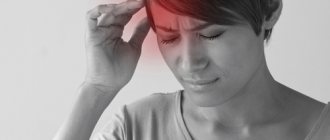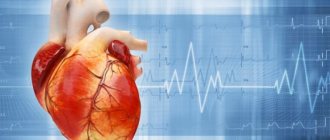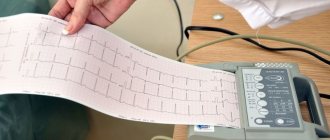A bluish coloration of the extremities, often accompanied by a decrease in skin temperature, a feeling of chilliness, and sweating of the skin of the hands and feet, is called acrocyanosis. This term is formed from two words meaning "limb" and "blue". Acrocyanosis of the skin looks like a spotty bluish or purplish coloration in the area of the fingers, wrists, and ankles. This condition was described more than a century ago, but is still poorly understood and is observed in various physiological and pathological conditions.
This symptom is caused by narrowing of small arteries in distant (distal) areas of the arms and legs. It is often observed in newborns and children, as well as in various diseases.
There are 2 types of acrocyanosis:
- primary: associated with spasm of small arteries under the influence of cold or emotional stress, can occur in healthy people and is not harmful to the body;
- secondary: appears in various diseases, including cardiological, oncological, neurological.
Acrocyanosis differs from diffuse cyanosis - diffuse bluishness of the skin. The latter form is associated with disturbances in the functioning of the heart, lungs, and blood.
What is acrocyanosis?
Acrocyanosis is a microcirculatory disorder characterized by persistent bluish discoloration of the extremities of the body. Acrocyanosis is caused by spasm of small vessels of the capillary circle in response to cold and is not associated with occlusive arterial disease (there is no ischemic phase).
Acrocyanosis occurs symmetrically, especially in the arms, legs and distal parts of the face. Often the extremities of the body are cold, they sweat a lot and may become swollen. Unlike Raynaud's syndrome, acrocyanosis is not easily reversible, there is no pain, no trophic changes or ulcerations occur, and the peripheral arterial pulse is normal.
Causes
The exact etiology of acrocyanosis is unknown. Side effects from medications and other substances have sometimes been reported. Some epidemiological evidence suggests that cold climates, occupational causes and low body mass index (BMI) are risk factors.
Additionally, acrocyanosis is common in young women (under 30 years of age) and often resolves completely after menopause. Therefore, it is believed that vasospasm is associated with neurohormonal abnormalities.
Acrocyanosis occurs where there is a change in central temperature control. Apparently, affected subjects are particularly sensitive to temperature fluctuations, with hypersensitivity to cold being more pronounced.
Primary acrocyanosis
Essential (or primary) acrocyanosis is a benign condition sometimes associated with a neurohormonal disorder. In general, it tends to regress spontaneously and does not require special treatment. On the other hand, emergency medical intervention may be required if the extremities are exposed to extreme cold for a long time.
However, acrocyanosis is different from hypothermia : the latter condition is often associated with pain (the reflex pathway of thermal nociceptors warns of danger).
A number of other conditions affecting the arms, legs and parts of the face, with associated changes in skin color, should be distinguished from acrocyanosis:
- Raynaud's syndrome : reversible episodes of pale skin of the fingers or toes due to narrowing of small blood vessels exposed to cold or severe emotional stress;
- Geloni (erythema pernio) : skin irritation caused by prolonged exposure to extreme and damp cold (see photo above);
- Acorygosis : a constant and symmetrical sensation of coldness in the extremities associated with pale skin;
- Erythromelalgia : vasodilation caused by an increase in skin temperature, which occurs with local heating, severe redness and very severe pain.
In some cases, diagnosis can be difficult, especially if these syndromes coexist.
Pathogenesis
The ways in which acrocyanosis occurs are not fully understood. In the primary version, a bluish coloration of the skin is possible due to impaired vascular function of small arterioles or venules.
In the secondary version, the development of acrocyanosis depends on its cause. Sometimes the pathology is associated with increased blood viscosity. In other cases, the mechanism of its development is associated with dysregulation of vascular tone and the accumulation of toxins, for example, methemoglobin.
The exact mechanisms at the molecular level in acrocyanosis, as well as, for example, in Raynaud's syndrome, remain to be understood. Alpha-adrenergic receptors of the vascular wall, serotonin and other nerve endings may be involved in the development of pathology.
The microscopic picture of tissues with acrocyanosis has the following signs:
- local edema with dilation of superficial capillaries;
- sometimes – the formation of new vessels;
- slight accumulations of lymphocytes around the vessels;
- an increase in the size and number of arteriovenous anastomoses (communications) bypassing the capillary bed;
- abnormally located collagen fibers.
Similar microchanges are visible in unchanged skin in patients with Ehlers-Danlos syndrome. At the same time, many cases of this syndrome are accompanied by acrocyanosis. Thus, this disorder is an inherited vascular dysfunction.
Primary acrocyanosis
This condition has been little studied. It is believed that it is associated with a violation of the tone of the smallest blood vessels - capillaries. With primary acrocyanosis, the pressure in them is reduced and the blood flow is slowed down. Compared to Raynaud's phenomenon, there is almost no improvement in blood flow when the extremities are warmed. Also in the primary form, the influence of neurotransmitters, impaired tone (expansion) of venules, and insufficient enrichment of blood with oxygen is discussed.
Secondary acrocyanosis
This pathology is caused by various reasons and mechanisms:
- allergic reactions lead to persistent expansion of capillaries and venules;
- the use of tricyclic antidepressants leads to an imbalance between H1- and H2-histamine and adrenergic receptors;
- arsenic poisoning leads to the formation of intravascular blood clots, which often cause limb amputation;
- acrocyanosis in malignant tumors is caused by increased blood viscosity and the proliferation of cellular elements of the vascular wall, this causes the specific “earthy” complexion of cancer patients;
- with anorexia nervosa, a persistent violation of thermoregulation occurs with a delayed response to vasoconstrictor and vasodilator stimuli.
Secondary acrocyanosis
Acrocyanosis may also be associated with a more serious health problem that should be looked for during diagnostic testing. Causal conditions include: connective tissue disorders, neurological disorders, vasculitis, problems leading to central cyanosis, antiphospholipid antibody syndrome (APS), cryoglobulinemia, infections, toxicosis and neoplasms.
In these cases, the skin changes observed are known as “secondary acrocyanosis.” They may have a less symmetrical distribution, express themselves later in life, and may cause pain and tissue damage. In general, proper treatment of the underlying condition can reduce the secondary symptoms of acrocyanosis.
What diseases does it develop in?
Secondary acrocyanosis develops in diseases:
- Cardiovascular diseases (myocardial infarction, vascular atherosclerosis, stroke).
- Hypoxia.
- Diseases of the respiratory system (acrocyanosis in bronchial asthma, alveolar malformations, pulmonary embolism, pulmonary hypertension).
- Some cancers.
- Prolonged fasting, sudden weight loss with constant nervous tension.
- Diseases of the joints and connective tissue (arthritis, lupus erythematosus, granulomatosis).
- Blood diseases.
- Spinal cord injuries.
- Chronic hypertrophic rhinitis.
- Down, Riley-Day, Sneddon syndromes, which are hereditary.
- Infectious diseases (mononucleosis, HIV, hepatitis C).
Signs and symptoms
Acrocyanosis is a condition characterized by persistent, symmetrical, uniform and painless peripheral cyanosis (see photo above). The extremities are often cold and the skin may be swollen. Hands and feet suffer from palmoplantar hyperhidrosis.
Unlike the closely related Raynaud's syndrome, cyanosis is persistent. In addition, there are usually no trophic changes in the skin, localized pain or ulceration.
Although the clinical manifestations are usually not associated with pain, however, in cases of greater severity, pain in the joints of the fingers, defined as “vasomotor polyarthralgia,” may occur. These symptoms are associated with vasomotor phenomena in the articular synovium.
Types of deviations
Four types of acrocyanosis can be observed:
- Central (permanent). This type is most often diagnosed in children with intracranial trauma received during childbirth. It can also manifest itself against the background of immature centers; most often, such diagnoses are made to premature or immature children. In adults, central acrocyanosis appears when respiratory depression occurs or when muscle layers are involved in the pathological process. Manifested by attacks of apnea, shallow breathing and convulsions.
With this disease, breathing may stop at night.
- Respiratory. With this type of acrocyanosis, the skin is affected mainly around the lips. A pronounced blue discoloration can be noticed when you are anxious. Most often occurs with disorders such as pneumonia, atelectasis, aspiration, developmental defects and others. Symptoms of respiratory cyanosis include shortness of breath, various respiratory syndromes, and skin changes.
- Cardiovascular cyanosis appears with an increase in blood pressure in the pulmonary circle, but congestion is noted in the large circle. If a child is diagnosed with total cyanosis, then most likely the baby has congenital heart defects. This type is permanent, and its symptoms can intensify with tension.
- With swelling of the legs. Most often, this type of cyanosis can be seen in children born in the breech position, or in adults who have any damage to the spinal cord. As you might guess from the name, this type of cyanosis has its own specific symptom - swelling of the legs.
To read: Causes and symptoms of uncomplicated hypertensive crisis
Heart failure can cause leg swelling
Diagnostics
Acrocyanosis is diagnosed based on medical history and physical examination.
Pulse oximetry shows normal oxygen saturation. Capillaroscopy and other laboratory techniques may be useful, but only to complete the clinical diagnosis in doubtful cases, especially when concomitant pathology is suspected. With acrocyanosis, the pulse of the peripheral arteries is normal, in rhythm and quality: this allows us to exclude occlusive disease of the peripheral arteries.
Treatment
There is no specific treatment for acrocyanosis, and pharmacological approaches are usually not helpful. Some α-adrenergic and calcium channel blockers are mentioned among treatment options. In extreme cases, surgery called sympathectomy is recommended (rarely performed). Protection from cold is the most effective measure to avoid the occurrence of the disorder.
Apart from skin discoloration, there are no other symptoms and no loss of functionality, so patients with acrocyanosis can lead a normal life.
Important! Certain medications should be avoided for this disorder, such as dihydroergotamine (present in many medications used for headaches), beta blockers (used for hypertension or certain forms of altered heart rhythm). Keep in mind that excessive weight loss may aggravate or cause forms of acrocyanosis in susceptible subjects.
Forecast
Primary acrocyanosis is a rare and benign condition with a good prognosis. Some treatments are available that can reduce symptoms in severe cases.
In newborns, acrocyanosis also has a favorable prognosis and goes away on its own.
Secondary acrocyanosis can be serious, depending on the underlying disease. Contact your doctor if you have symptoms of acrocyanosis. They can determine if there is an underlying condition that needs treatment.
Prevalence of pathology
The most common cause of secondary acrocyanosis is Raynaud's phenomenon.
The number of people who experience acrocyanosis is very difficult to estimate. The severity of this trait greatly depends on climate and other environmental conditions. It is believed that among urban residents of the temperate zone, acrocyanosis is observed in 12% of cases. However, there have been cases of an increase in the prevalence of pathology to 36% or more, associated with an increased content of arsenic in the surrounding nature.
Primary acrocyanosis is mainly observed in young people, and is first diagnosed in adolescents (age 10-20 years). In middle-aged patients, it is practically not recorded, and is also not observed in menopausal patients. This suggests the participation of sex hormones in the development of pathology.
Among children under 10 years of age, acrocyanosis occurs, but is quite rare, and has a benign course, that is, it goes away with age.
Sometimes acrocyanosis in children is a symptom of serious diseases, in particular mitochondrial disorders.
There is a family predisposition to the occurrence of this condition. Women get sick 6-8 times more often than men.
The prevalence of secondary acrocyanosis is better studied. Thus, during fasting it occurs in 10-75% of patients, with anorexia nervosa - in 40-80%, and with cancer - in 24% of patients.










